All about gramophones

The construction of gramophones and how they work is very interesting for those who are interested in technology. Records, needles and spare parts must be chosen very carefully. Connoisseurs should pay attention to the antique gramophones "Hammer", "Leningrad" and other modifications.

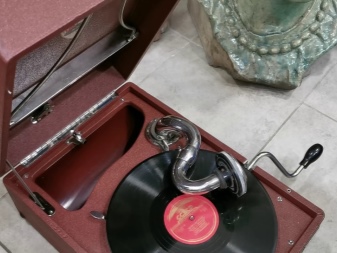
A bit of history
It may seem very strange that it was only at the very end of the 19th century that the first sound-reproducing devices began to appear. In 1877, a phonograph was created, and 11 years later, a gramophone.
The gramophone was invented by an employee of the then famous French company "Pate" Kemmler in 1901.
Strictly speaking, however, there was no talk of a full-fledged invention. This new development does not look like a gramophone, but technically it is precisely its subspecies. Kemmler's innovation was to:
- reduce the pipe;
- place it in the case;
- thus achieve a compactness of the device and allow it to be carried.
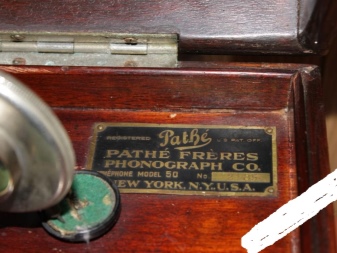
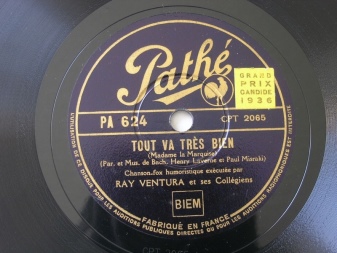
The principle of operation has not changed, in fact, although it has undergone some adjustments. Moreover, the very name "gramophone" appeared as a result of the merging of the corporate brand with the word "background", that is, sound. It is unknown anywhere outside our country. It is worth noting that this device did not appear in the same form in which it left the scene, giving way to more advanced technology. Initially, the scrolling of the records was provided exclusively by a mechanical "winding".
Having unrolled the device properly, it was possible to listen to the disc from one side. Such a device did not need power supply. The volume could not be adjusted.
Gramophones of the early years of production have hardly survived, and the number of those made before the 1920s was very small. The real heyday of these devices came in the pre-war decade.
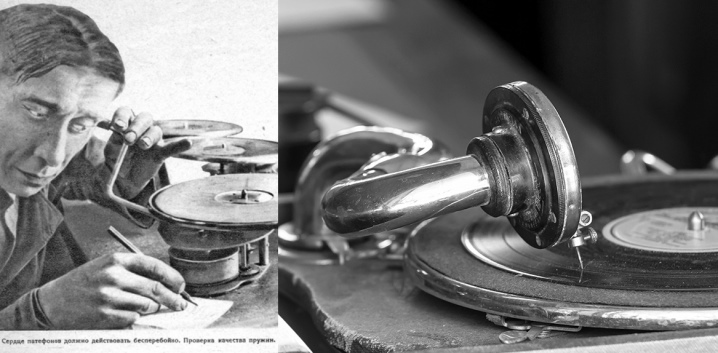
Between 1930 and the late 1950s, gramophones were extremely popular. They were listened to both at home and in city parks. Such devices and records for them were produced by quite a few enterprises. Even the electrophones that appeared in the 1940s did not immediately supplant the gramophone; abroad, by the way, the situation was the same. Only in the mid-1950s, the production of gramophones and gramophones, as well as records for them, began to decline, and soon they were completely replaced by tape recorders.
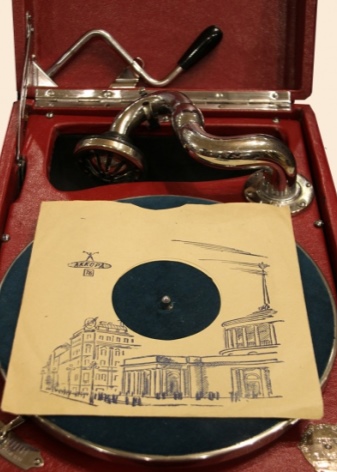

How does it work?
The structure of the gramophone mechanism is quite simple. The main drive, as already mentioned, is the spring system. A bell located inside the box enhances the sound. A centrifugal regulator helped to regulate the speed. Sound reproduction was provided using a steel (less often sapphire) needle and a membrane.
Sapphire needles have gradually supplanted their steel counterparts because they can be used many times. The sound volume ranged from 80 to 100 dB.
The gramophone could not boast of sound quality. He wheezed and squealed, gave strong distortion. When the stylus wore out, the sound deteriorated even more.


It is worth noting that there are gramophones with a pipe brought out to the outside. At the same time, any device differs from a gramophone in the way the adapter works. The sound groove is formed in a deep, not transverse way. The earliest versions of Pate's products were meant to be reproduced not from the perimeter to the middle, but vice versa. But soon this decision was rejected, because a large number of traditional records had already been produced.
There were both travel (lightweight) turntables and floor-standing versions of them. The difference between them came down mainly to size and weight. At the same time, it was impossible to create a completely miniature device - the technology of records and reproduction imposed a limitation. This circumstance is taken into account when creating modern technology in retro style. The latest models were no longer calculated for a mechanical, but for an electric drive. But that was the swan song of this kind of device.
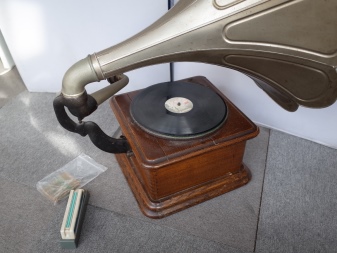
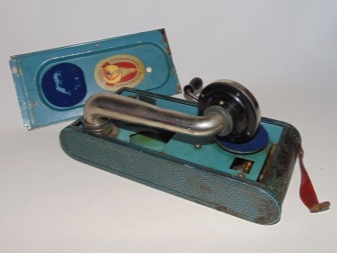
Manufacturers
A genuinely old apparatus from Pate or other European manufacturers, produced before 1920, is a colossal rarity. Therefore, most of the antique gramophones were produced in the USSR, moreover, mainly after 1938. This is probably due to the fact that earlier models turned out to be completely worn out by the time the release was curtailed.
It was established that the most mass production of gramophones was launched at the Kolomna plant since 1938.
But it did not last long - for obvious reasons, the enterprise soon had to change its specialization. And they were also released by:
- the plant of the Order of Lenin "Hammer";
- Moscow, Leningrad and Vladimir gramophone plants;
- the Moscow (then exported to Kazan) plant with the unification of the precision industry;
- cooperative factory "Krasnogvardeysk";
- Dnepropetrovsk gramophone plant;
- bicycle factory named after Frunze, located in Penza.
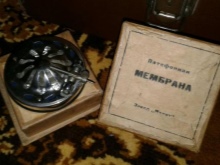
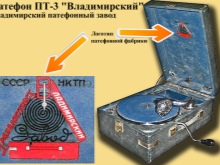

Rarer manufacturers:
- weaving factory "Pioneer" (between 1925 and 1933);
- Aprelevsky plant (which first mastered the production of vinyl);
- artel "Gramophone";
- English HMV models.
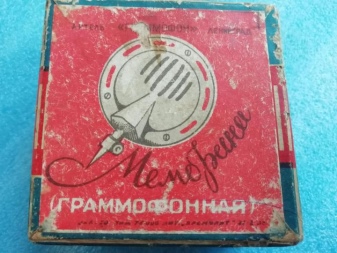
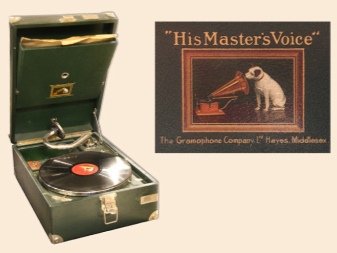
Not only Leningrad, but also Druzhba is very popular among collectors. It is curious that even modern firms often produce gramophones, although more often they are imitations of them. Along with simple versions, there are those that are able to copy sound from records to flash cards, or remotely controlled. Sometimes connection to external speaker systems is also implemented. Striking examples:
- AR-003 Leader;
- Camry CR 1149;
- Crosley Keepsake USB;
- Weltbild Nostalgia.
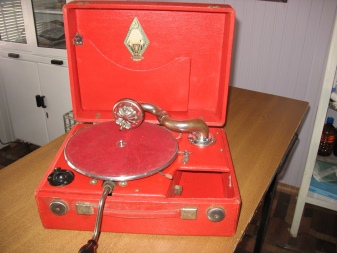

How to use?
The most important thing to remember is that steel needles will be needed in a very large number. Soft alloy quickly breaks down, and therefore, after listening to one side of the disc, you have to change the needle. If this is not done, the pickup tip will gradually deteriorate the gramophone records. There is no need to worry about this - the price of needles is low.
It is necessary to choose them in terms of thickness: the larger it is, the more loudly the recording plays, and some enthusiasts even make needles with their own hands from bamboo and other materials.
In the past, even special machines were produced for self-obtaining needles. As soon as the gramophone is purchased, it is necessary to carry out preventive measures. It means:
- applying lubricant to moving parts;
- replacement of broken blocks;
- adjusting the device to suit your tastes.

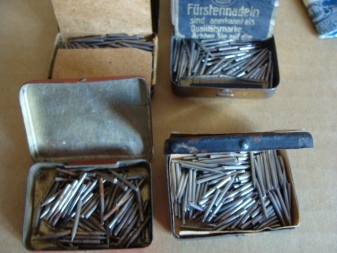
The simplest maintenance option involves the use of screwdrivers, napkins and machine oil. If the gramophone is badly worn out, you will need spare parts and auxiliary tools to repair it. The process of disassembling and servicing the device is as follows:
- removing the motor;
- removing the screws holding the top panel;
- removing the plate circle;
- careful removal of the bezel;
- fastening the pickup with a soft cloth;
- removal of leaked grease for the hearth;
- wiping, as necessary, restoration of the forge;
- if necessary, disassembly of the engine and replacement of problem areas;
- assembly in reverse order;
- planting washers and gaskets on hot melt glue so that nothing falls out;
- speed regulation.
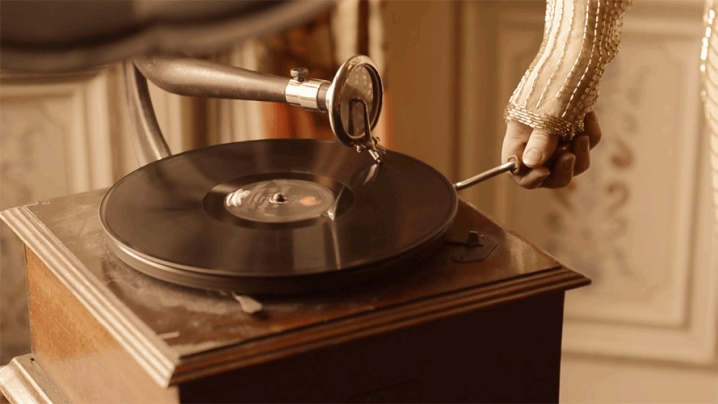
Vinyl is usually purchased from thrift stores or online auctions. Some people order them on eBay, but in this case, the shipping costs will be quite significant. Do not think that you can immediately turn on any purchased record. It will have to be cleaned first. This is usually done with gentle detergents that are applied with an unnecessary toothbrush.
When cleaning, you need to move the brush along the radius. Strong pressure is contraindicated. It is better not to touch the stickers with the inscriptions. Next, the plate will have to be rinsed under a stream of warm water and wiped dry with microfiber that does not leave hairs. It is better to buy slivers (plate packs) additionally, because the supplied ones are often worn out.
For a gramophone, gramophone (not gramophone!) Records are needed. They must be regularly wiped from dust.
The needles are not placed perpendicular to the surface of the carrier, but at the angle specified in the instructions. The weight of the tonearm must be taken into account. If you need to remove old grease from the spring and other parts, you can use the WD-40.


Recommendations:
- store the gramophone in a warm, dry place;
- wind it clockwise (and even if a different direction is provided, it is always only in one direction);
- avoid the use of excessive force;
- stop the plant as soon as there is a feeling of increased resistance, otherwise the spring may be broken;
- avoid placing a gramophone before long storage (a twisted and compressed plate can deteriorate in a couple of months);
- lower the needle onto the plate gently and smoothly when the disc is already spinning;
- start the gramophone before playing the recording, and not during it.
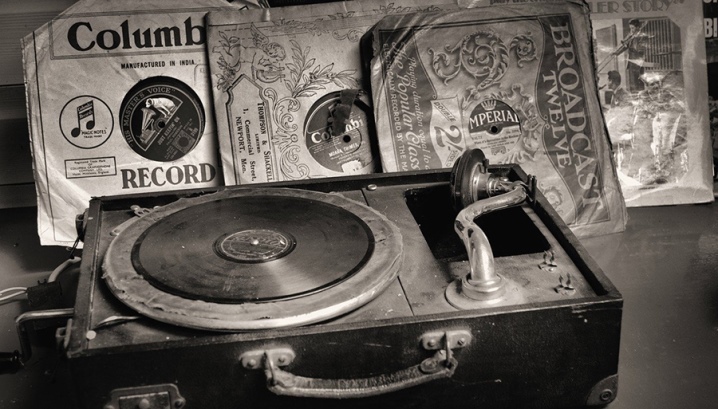











The comment was sent successfully.